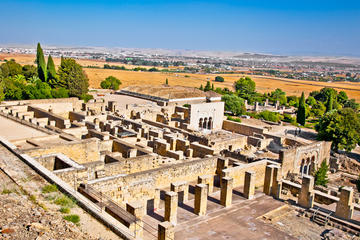Medina Azahara
TIME : 2016/2/22 14:03:40

Medina Azahara
Just a short drive away from Spain's southern city of Córdoba sits Medina Azahara. While little of the 10th-century medieval palace-town remains, its legacy as "Old Córdoba" lives on.
Legend has it that the city, erected by Caliph of Córdoba Abd al-Rahman III, was named after the Caliph’s favorite concubine, Azahara. Recent studies, however, reveal that its creation likely had more to do with politics, symbolizing the Caliph's power and superiority over his rivals. Whatever the case, for a short time, Medina Azahara stood as the de facto capital of Muslim Spain (called al-Andalus) before it was eventually devastated during civil war in 1010, only to be abandoned, buried away, and finally excavated in the early 1900s.
Rectangular in shape, Medina Azahara was carefully laid out, with an advanced sewer system. The hillside township was broken into terraces: the top and middle sections dedicated to the royal palace, and the lower tier was home to residences and other buildings. Among them was one of the city's most notable structures: the community mosque, which, with its palm-tree-like arches, is known as the "little sister" of Córdoba’s grand Mezquita. Practical Info:
Medina Azahara is located just a short twenty-minute bus ride from Córdoba. Bus tickets must be purchased in advance, either online or at tourist information points. While at Medina Azahara, you can visit the museum and see what has been restored of the city, which sadly, only represents about 10% of what once existed.
